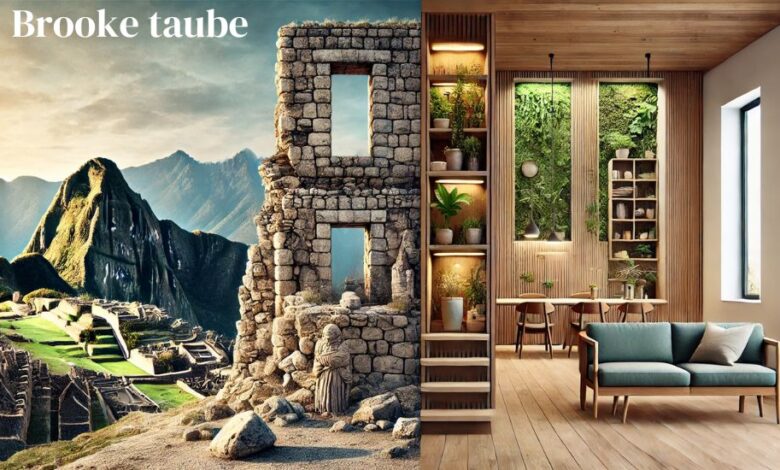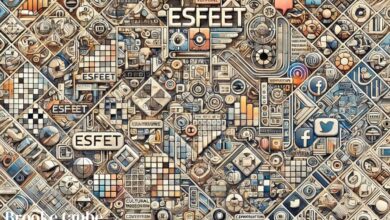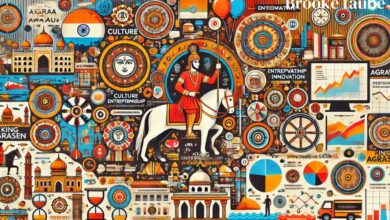
“Ruderne” is a term that invites multiple interpretations depending on its context, embodying both historical and contemporary significance. From ancient ruins to modern lifestyle philosophies, Ruderne encompasses diverse areas of human life and culture. Whether it’s the exploration of decaying ruins from past civilizations or a minimalist, nature-inspired lifestyle that promotes tranquility, Ruderne captures the imagination. This article delves into the complex world of Ruderne, examining its historical, cultural, and philosophical dimensions.
Table of Contents
ToggleThe Historical Significance of Ruderne: Ruins and Their Stories
At its most traditional level, Ruderne refers to abandoned, decayed ruins from ancient cities and historical sites. These ruins are scattered across the world, including iconic locations like Pompeii, the Roman Colosseum, and Machu Picchu. Ruderne sites stand as a testament to the rise and fall of civilizations, with their crumbling structures and weathered stones reflecting both human achievement and vulnerability.
These ancient Ruderne sites offer profound insights into the cultures, technologies, and architectural prowess of past civilizations. Archaeologists, historians, and tourists alike flock to these sites to explore the remnants of human history. Through these ruins, we learn about trade routes, social hierarchies, and even the daily lives of the people who once inhabited these spaces.
In literature and art, Ruderne has been romanticized as symbols of time’s passage, human frailty, and the inexorable decline of even the most powerful societies. Writers like Percy Bysshe Shelley, in his famous poem “Ozymandias,” use the imagery of ruins to emphasize the transient nature of human achievements. Films and media have also capitalized on the allure of Ruderne, such as the “Indiana Jones” franchise or “Tomb Raider,” which often feature mysterious, decaying sites filled with lost treasures.
The Cultural Influence of Ruderne: Beyond Ruins
While Ruderne primarily invokes images of ruins, it also signifies the broader cultural and social impact of such sites. Ruins are more than mere historical artifacts; they are symbols of resilience and transformation. In the modern era, Ruderne has inspired a global movement known as “urban exploration,” where individuals explore decaying buildings and forgotten sites in search of adventure and historical remnants.
Ruderne sites have become popular tourist destinations, drawing millions of visitors each year. They also contribute significantly to local economies by generating tourism revenue and supporting conservation efforts. Countries like Greece, Italy, and Peru, which are home to some of the world’s most famous ruins, rely heavily on Ruderne sites to fuel their cultural tourism industries.
In addition to their economic impact, Ruderne plays a vital role in education and historical preservation. Many of these sites are protected under UNESCO’s World Heritage list, which ensures that future generations can experience these cultural treasures. This balance between preservation and public accessibility is essential for ensuring the survival of these sites amid the threats posed by natural decay and human interference.
Ruderne in Modern Lifestyle: A New Interpretation
Interestingly, Ruderne has evolved beyond its historical connotations and entered the realm of modern lifestyle philosophies. Inspired by Scandinavian design and minimalism, Ruderne represents a lifestyle that emphasizes simplicity, nature, and tranquility. This philosophy encourages individuals to strip away excess, focusing instead on creating environments that foster peace and clarity.
The Ruderne lifestyle integrates natural materials like wood, stone, and greenery into living spaces, creating an atmosphere that bridges the indoors and outdoors. A Ruderne-inspired home, for instance, is often designed to be a sanctuary from the chaos of the outside world, featuring minimalist furniture, soft color palettes, and natural light. This approach not only enhances aesthetic appeal but also promotes mental well-being by reducing distractions and fostering a sense of order.
Ruderne as a lifestyle extends beyond interior design to encompass mindful consumption, ethical living, and emotional well-being. It encourages individuals to adopt sustainable practices, such as choosing durable, eco-friendly products and supporting local artisans. The philosophy also advocates for intentional living, where everyday actions—whether it’s cooking a meal or enjoying a walk—are approached with mindfulness and purpose.
Emotional and Ecological Aspects of Ruderne
A key element of the Ruderne philosophy is its emotional resonance. Whether through its historical significance or its modern-day applications, Ruderne has the power to evoke deep emotional responses. In the context of ruins, these decayed sites often stir feelings of nostalgia, curiosity, and even melancholy. They remind us of the impermanence of human creations and the relentless march of time. Yet, there is also a beauty in this decay, as nature slowly reclaims these abandoned spaces.
Ecologically, Ruderne sites often become thriving ecosystems, where flora and fauna find refuge amidst the crumbling structures. Plants grow through cracks in stone walls, and animals make homes in the shelters left behind. This natural reclaiming of Ruderne sites reflects the enduring power of the earth to heal and regenerate, even in spaces that humans have long forgotten.
From an emotional standpoint, the Ruderne lifestyle philosophy also seeks to evoke peace and contentment. It encourages individuals to design their spaces and live their lives in ways that reduce stress, foster connection with nature, and create a sense of groundedness. This emotional and ecological harmony is at the heart of the Ruderne concept, whether we are talking about decayed ruins or modern minimalist living.
The Future of Ruderne: Preservation and Adaptation
As globalization and urbanization continue to reshape the world, the concept of Ruderne is likely to evolve further. In the context of historical ruins, there is an ongoing debate about how best to preserve these sites while allowing public interaction. Experts are exploring new technologies that can help maintain the structural integrity of Ruderne sites without compromising their accessibility to tourists and researchers.
In the realm of lifestyle, the principles of Ruderne are becoming increasingly relevant as people seek ways to simplify their lives and reconnect with nature. As the environmental movement grows, more individuals are adopting sustainable practices that align with the Ruderne philosophy of mindful living and consumption. The future of Ruderne lies in balancing the old and the new—whether it’s preserving ancient ruins or adapting minimalist design to modern contexts.
Conclusion: Ruderne as a Reflection of Human Experience
In conclusion, Ruderne is a multifaceted concept that holds deep significance across both history and modern life. Whether we are exploring the decayed remnants of ancient civilizations or adopting a minimalist, nature-oriented lifestyle, Ruderne speaks to universal themes of time, transformation, and human resilience. It reminds us of the impermanence of all things, yet also offers a pathway to emotional and ecological harmony.
The allure of Ruderne, in all its forms, lies in its ability to connect us with the past while guiding us toward a more mindful and sustainable future. As we continue to explore and reinterpret this concept, Ruderne will remain a vital part of how we understand our world and our place within it.



